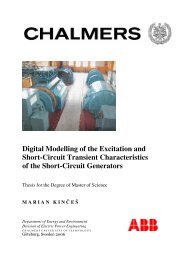Modeling and Simulation of Vehicular Power Systems - webfiles its ...
Modeling and Simulation of Vehicular Power Systems - webfiles its ...
Modeling and Simulation of Vehicular Power Systems - webfiles its ...
You also want an ePaper? Increase the reach of your titles
YUMPU automatically turns print PDFs into web optimized ePapers that Google loves.
7 <strong>Modeling</strong> in Simulink/MatlabOnce the analytical approaches have finished regarding each component used in a typicalhybrid drive train it is required to make a model for any <strong>of</strong> the components in asimulation area. All the components including battery, engine, electric motor <strong>and</strong>generator, vehicle dynamics, tyre, automatic driver, driving cycles <strong>and</strong> control system aremodeled in Matlab/Simulink. In the following, the modeling process in Matlab for eachpart is explained.7.1 BatteryOnce all the parameters including charging <strong>and</strong> discharging resistances, open circuitvoltage <strong>of</strong> the battery versus state <strong>of</strong> charge <strong>and</strong> temperature were measured byexperiments, those values are used as look up tables. The model consists <strong>of</strong> three parts:SOC calculation block, voltage calculation <strong>and</strong> thermal modeling block shown in figure7-1. The input <strong>of</strong> the model is the requested power out <strong>of</strong> the battery. According to therequested power using analytical solutions the current <strong>and</strong> terminal voltage <strong>of</strong> the batteryis calculated. As mentioned in chapter 4 during modeling in respect to the direction <strong>of</strong> thepower, charging <strong>and</strong> discharge resistances are selected. As current is drawn out <strong>of</strong> thebattery the total charge drawn out <strong>of</strong> the battery is calculated. Based on the internaltemperature coming from the thermal model <strong>and</strong> current, the maximum capacity <strong>of</strong> thebattery (A.h) is corrected by look-up tables. The charge drawn out <strong>of</strong> the battery isdivided by the maximum capacity <strong>of</strong> battery in a certain current <strong>and</strong> temperature givesthe state <strong>of</strong> charge <strong>of</strong> the battery.In each time step the parameters are updated according to temperature <strong>and</strong> state <strong>of</strong>charge. The maximum charging <strong>and</strong> discharging power, terminal voltage <strong>and</strong> current islimited in the model.41


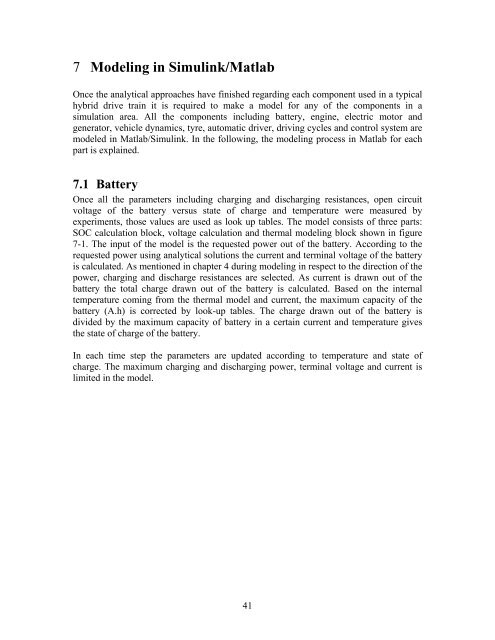

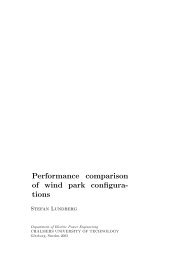
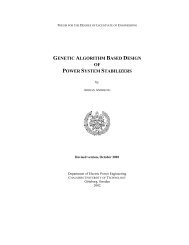

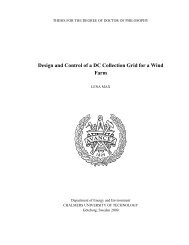

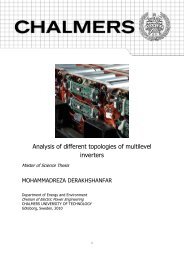

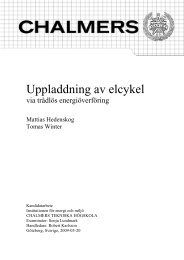

![LAPLACE OPERATOR.ppt [Lecture seule]](https://img.yumpu.com/42909900/1/190x135/laplace-operatorppt-lecture-seule.jpg?quality=85)

